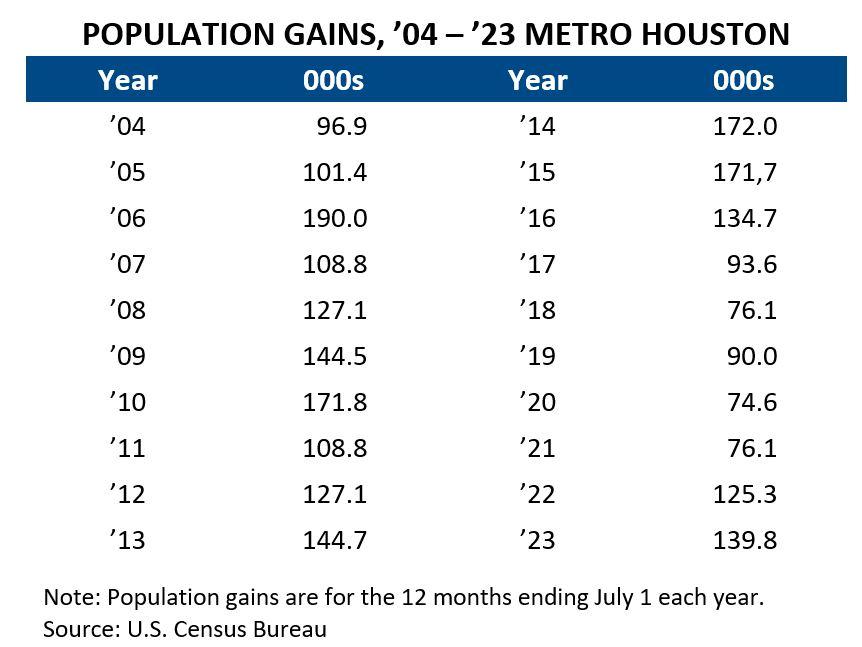
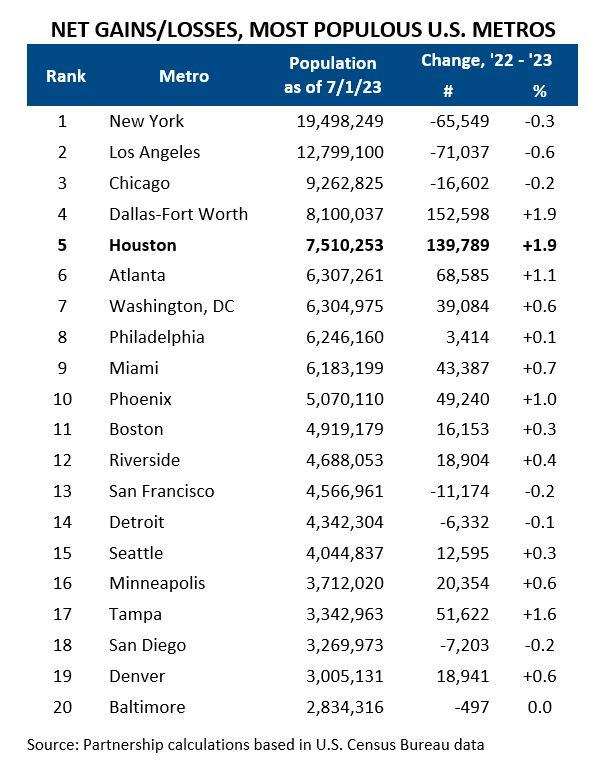
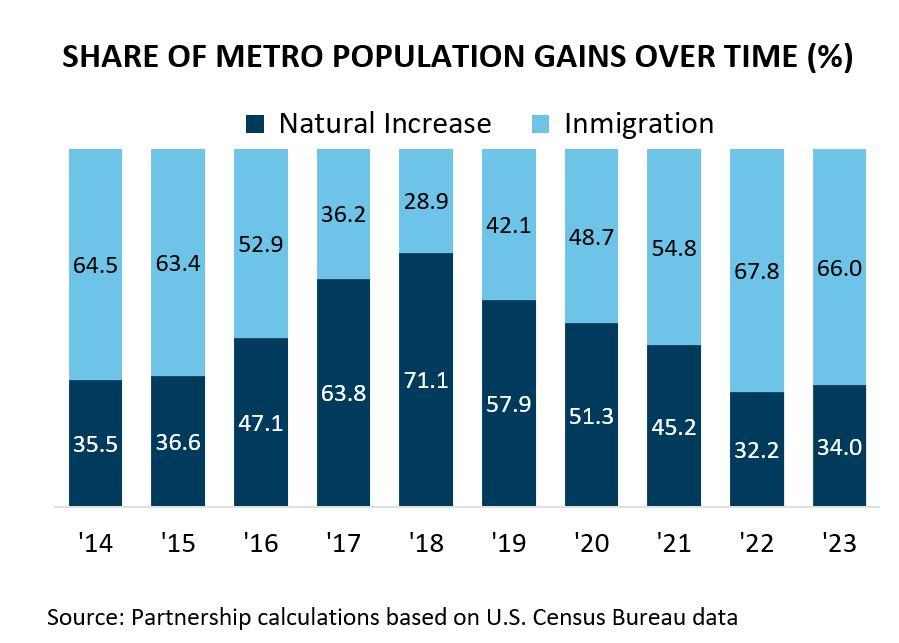
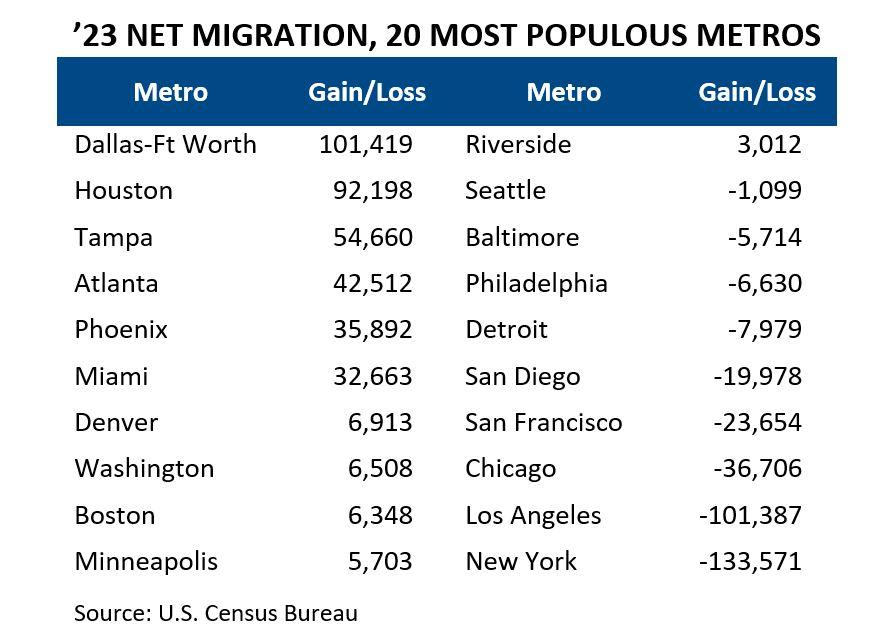
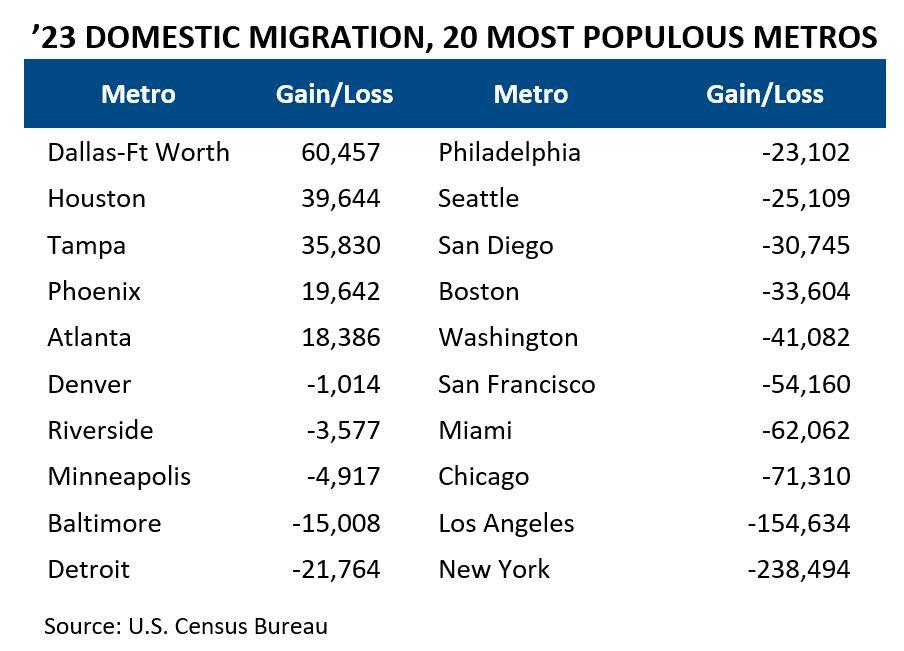
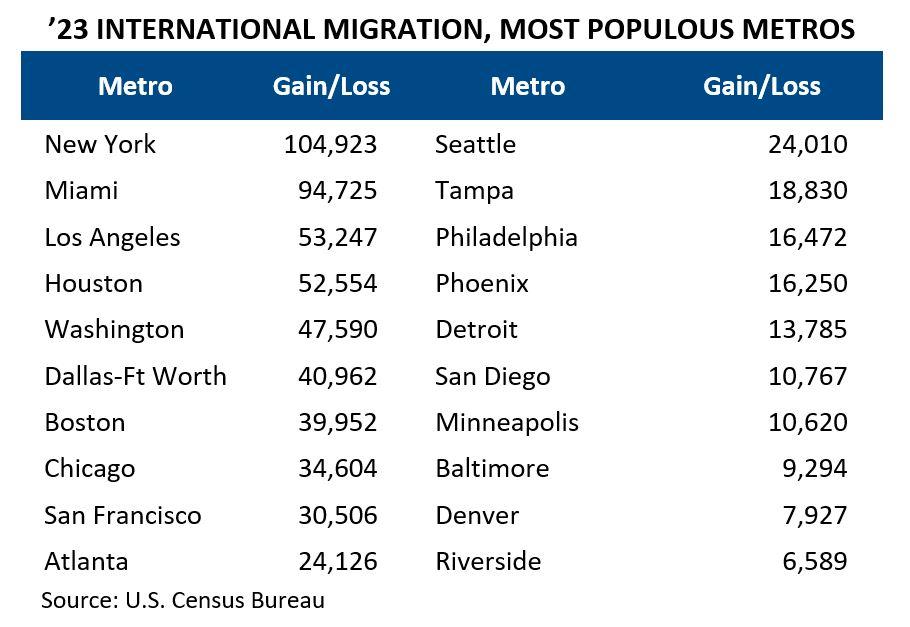
Key March Takeaways
Here are the facts to know about the Houston region this month
1 April Takeaway #1
Houston added nearly 140,000 residents in ’23, second among U.S. metros in population growth.
2 April Takeaway #2
The metro area ranked third in the nation for new and expanded facilities in ’23.
3 April Takeaway #3
Recent revisions show Houston created 102,900 jobs in ’23, much better than the 70,100 originally reported.
POPULATION GROWTH
Houston added nearly 140,000 residents in ’23, second among U.S. metros in population growth. The increase equates to a new resident every 3.8 minutes. Since ’20 when COVID-19 constrained population growth, the region has added over 340,000 residents. Population in the 10-county region now exceeds that of 37 states and the District of Columbia.

Houston ranked second in numeric gains behind Dallas-Fort Worth and tied the metroplex in percent growth. The nation’s three most populous metros, New York, Los Angeles, and Chicago, saw their populations shrink. Only six of the nation’s major metros—Atlanta, Dallas-Fort Worth, Houston, Miami, Phoenix, and Tampa—registered significant gains.
Rankings Shift
Atlanta overtook Philadelphia and Washington, DC, becoming the nation’s sixth most populous metro area. Houston has a lock on fifth place. Its population is growing faster than Atlanta’s but not as fast as Dallas-Fort Worth’s.

Customs District Traffic
Houston’s gains came from two sources—the natural increase and net inmigration. The natural increase reflects births minus deaths in the region. Net inmigration includes people who moved into Houston minus those who moved out. Two-thirds of Houston’s gains came from net inmigration and one-third from the natural increase. The ratio frequently shifts, with inmigration accounting for a larger share of population growth when the region’s economy booms (like last year) and a smaller share when it struggles (like ’17 and ’18).

Net Inmigration
Metro Houston ranked second in net inmigration among all metros in ’23. Nine of the nation’s 20 largest had negative inmigration, i.e., more residents moved out than moved into those regions. New York, Los Angeles, and Chicago, the worst performers, lost a combined 270,000 residents to outmigration. Gains from the natural increase weren’t enough to offset these losses and all three saw their populations shrink in ’23.

Net migration has two components, domestic and international. Domestic reflects the population moving from within the United States; international reflects the residents arriving from abroad. International migration includes ex-pat workers called home from overseas, foreign workers assigned to multinational companies here, military personnel redeployed stateside, international students enrolling at local universities, temporary workers on H1-B and H2-B visas, refugees placed in the city by relief agencies, and immigrants (documented and undocumented) who left their homelands for better lives in America.
Only five major metros gained population via domestic migration. The remainder saw more residents move out than move in from elsewhere in the U.S. Metro Houston performed well, however, ranking second for positive domestic migration.

Houston ranked third for international migration, behind New York and Miami. All 20 of the nation’s major metros benefitted from international migration.

To continue reading, download this report.
Note: The geographic area referred to in this publication as “Houston,” "Houston Area” and “Metro Houston” is the ten-county Census designated metropolitan statistical area of Houston-Pasadena-The Woodlands-Sugar Land, TX. The ten counties are: Austin, Brazoria, Chambers, Fort Bend, Galveston, Harris, Liberty, Montgomery, San Jacinto, and Waller.



